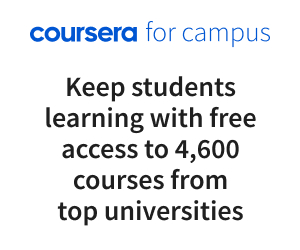Malaysian universities have had a hard year, but the move to online learning could be a blessing in disguise for students and educators
Malaysia makes a fascinating case study for digital transformation in higher education. It has received international recognition for its agile response to the Covid-19 pandemic, innovating in real time to roll out new modes of digital learning. The panel at Times Higher Education’s roundtable, titled “Creating international hubs for teaching and research: digital transformation in Malaysian universities”, agreed it was not easy.
“It has been a challenging year,” said Perry Hobson, pro vice-chancellor of engagement at Sunway University. “We have had to shift very quickly to an online experience. Our students’ parents and families have a high expectation of face-to-face teaching. It was a big learning curve.”
Sunway University is not unique in having to make difficult estate management decisions as its operations moved to digital platforms. “Do we really need all those lecture theatres of 400 to 500 seats?” asked Hobson. “Once you have poured a lot of concrete, it’s very hard to change it. This has really focused our minds on the balance between the digital and the experiential.”
This tension lies at the heart of digital transformation. Mohamed Ibrahim bin Abdul Mutalib, vice-chancellor at Universiti Teknologi Petronas (UTP), said the campus was “part and parcel” of student experience and development. When Covid-19 reached Malaysia, UTP was in the middle of a semester. “We had to do that adjustment within a week,” he said, adding that UTP was lucky that it had the platforms available to deliver digital teaching, but that training faculty was crucial for transitioning from traditional forms of lecture.
Addressing digital inequality was a key component of Malaysia’s digital transformation. Faidz Rahman, vice-president of research and development and commercialisation at Universiti Tunku Abdul Rahman (UTAR), spoke of universities collaborating with tech companies to tackle digital inequality. UTAR made discounted laptops available to its students, and loans were extended so students could buy the technology to participate in online learning.
With many first-year students deferring their studies until the pandemic is over, institutions faced unique financial pressures. Operational budgets had to be amended on the fly to maintain teaching while campuses were closed.
These experiences were shared by all institutions, but for Universiti Malaysia Terengganu (UMT), an institution rooted in fisheries and marine science, having no way to conduct field teaching and research was uniquely challenging. “For research students, we tried to have partner universities as course providers so that they could give our international students a lab to work,” said Ahmad Faisal bin Mohamad Ayob, director of UMT’s International Centre. “For biological lectures, they tried to do a lot of online experiments to give undergraduate students experience on what they can do in a lab.”
During the first three months of the 2020 Movement Control Order, a measure that was put in place by the government to mitigate the spread of Covid-19, Malaysian higher education institutions leaned heavily on free Coursera platforms to supplement and accelerate the digital delivery of their teaching. Worldwide, more than 3,700 universities used Coursera services as part of their shift online during the pandemic, with more than 2.4 million students enrolling in at least one of Coursera’s online courses.
While students could participate in online learning labs, universities had to rethink their modes of assessment, incentivising lecturers to accommodate blended learning in their marking. If this first wave of digital transformation was shaped by the pandemic, it has offered an opportunity for radical innovation that Malaysian universities are keen to seize.
“I don’t think we will go back totally to how we were before,” said Roziah Mohd Janor, assistant vice-chancellor at Universiti Teknologi MARA (UiTM). “Now that we can use online learning, in a way, this will be a blessing in disguise for us.”
For large institutions such as UiTM, online learning has provided a way of bringing its campuses together, saving costs and pooling resources. By its very nature, digital transformation is an ever-evolving process, and that process is well underway in Malaysia.
The panel
Alistair Lawrence, special projects editor, Times Higher Education (chair)
Yee Wai Sim, professor and deputy dean, Quest International University Perak
Perry Hobson, pro vice-chancellor of engagement, Sunway University
Roziah Mohd Janor, assistant vice-chancellor, Universiti Teknologi MARA
Mohamed Ibrahim Abdul Mutalib, vice-chancellor, Universiti Teknologi Petronas
Faidz Rahman, vice-president, Universiti Tunku Abdul Rahman
Ahmad Faisal Mohamad Ayob, director, International Centre, University Malaysia Terengganu
Rofina Yasmin Othman, associate vice-chancellor of industry and community networks, University of Malaya
Chia sien Lim, head, Graduate School of Technology, Asia Pacific University of Technology & Innovation
Siaw Yien Loh, director of quality assurance, Universiti Tunku Abdul Rahman
Watch the roundtable on-demand above or on the THE Connect YouTube channel.










































































